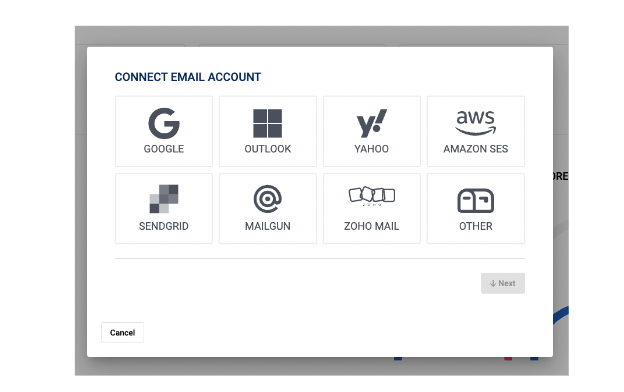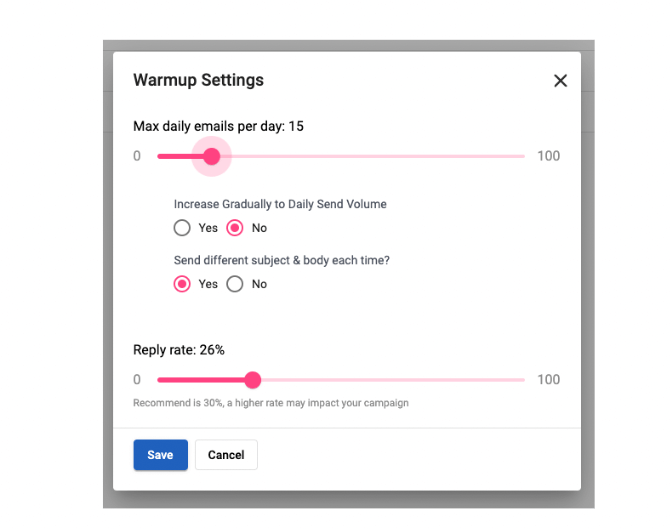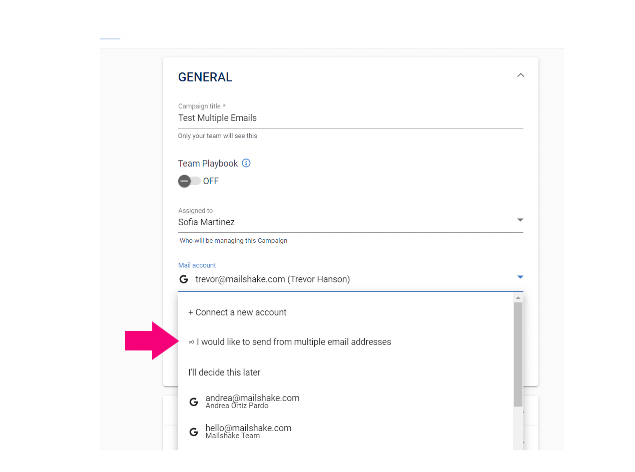Email Rotation: Ultimate Guide to Scale Cold Email Outreach

Contents
Imagine you’re a secret agent trying to sneak through a city without getting caught by surveillance cameras. If you take the same route every day, those cameras will eventually spot you and sound the alarm.
But you’re smart—and you mix things up. You wear different disguises and change your route frequently to blend in and avoid drawing unwanted attention.
Email rotation is similar. Instead of sending all your emails from one address and getting flagged by email service providers for spam, you spread them out across multiple addresses. This keeps you under the radar, helping your emails land in inboxes instead of spam folders.
Let’s take a more detailed look at what email rotation is, the types of businesses that benefit most from it, its benefits, and step-by-step instructions on how to implement it effectively.
What Is Email Rotation and How Does It Work?
Email rotation, also known as sender rotation or inbox rotation, is a way to improve email deliverability by sending messages from multiple email addresses.
When you send a lot of emails from the same address or domain, it can look suspicious to email service providers. They might think you’re spamming people and mark your messages as junk.
That’s where email rotation comes in. Instead of sending all your emails from one address, you spread them out across multiple addresses or IPs.
This means if you need to send 1,000 emails, you could send 250 from one address, another 250 from a different one, and so on. This way, email providers are less likely to flag your messages as spam.
Email rotation has become even more important since Google’s February 2024 announcement, which requires bulk senders to stay under a 0.3% spam complaint rate. This means if you send 1000 emails and only even three get marked as spam, your domain gets blocked.
What Type of Businesses Need Inbox Rotation?
Email rotation is helpfulfor any business that either relies on cold emailing to acquire clients or sends a high volume of emails regularly. Here are four examples of businesses that benefit from inbox rotation:
- Marketing agencies: Managing email campaigns for numerous clients involves sending a significant number of emails. Using multiple email addresses helps maintain high deliverability rates and keeps clients happy.
- E-commerce businesses: These frequently send promotional emails, newsletters, and updates to a large customer base. Rotating email addresses helps them avoid being marked as spam and ensures their messages reach the inbox.
- Non-profits and fundraising organizations: These groups need to communicate regularly with donors and volunteers. Inbox rotation ensures that important messages, such as donation appeals or event invitations, don’t end up in spam folders.
- Event organizers and online educators: Running large-scale email campaigns for events or courses means sending thousands of emails.
You don’t have to fall into one of these categories to benefit from email rotation. Inbox rotation helps any bulk sender, which Google defines as someone who sends 5,000 emails or more to personal Gmail accounts within 24 hours.
How to Implement Email Rotation
To implement email rotation, start by segmenting your list. Then set up new inboxes, warm them up, and start sending campaigns.
Segment Your Email List
If it makes sense, divide your subscribers into smaller, targeted groups that you can email with different domains.
Here are some tips to help you effectively segment your email list:
- Know your audience: Group subscribers based on demographics, interests, or behaviors. Think “new subscribers,” “loyal customers,” or “inactive users.”
- Use your data: Use data like purchase history and past email engagement to create meaningful segments.
- Set clear criteria: Define what qualifies for each segment. For example, high engagement could mean frequent email opens or clicks.
- Regularly update segments: Keep your segments fresh by revisiting and adjusting them as needed.
Set up New Inboxes
Setting up new inboxes means creating new email accounts.
Begin by selecting different email service providers for each new account. For instance, you can use Gmail for one, Outlook for another, and Yahoo Mail for a third.
This diversifies your sending domains and IP addresses, reducing the risk of all your emails being flagged or blacklisted if one provider encounters issues.
While creating new email accounts, opt for professional email addresses instead of generic ones. Choose addresses that clearly indicate the nature of the communication, such as “newsletter@yourcompany.com” for newsletters or “updates@yourcompany.com” for updates.
Also, don’t forget to configure the settings for each inbox, including SPF, DKIM, and DMARC records, to ensure your emails are authenticated. Here’s a detailed guide by Mailshake on how to set up these authentication records.
Warm Up Your Inboxes
Warming up inboxes means increasing email sending volume for each inbox gradually.
To do this manually, spend a few weeks logging into your domain provider and sending five to ten emails daily to people you know, like co-workers, family, or friends.
The exact content of these emails isn’t as crucial as getting replies from the recipients. For instance, you can use a simple template like this:
Subject: Quick Update
Body:
Hi [Name],
I hope you’re doing well! I’m just sending a quick email to check in and warm up my new email address. Could you reply when you get a chance? It would really help me out.
Thanks a bunch!
Best,
[Your Name]
Encourage recipients to reply, mark the email as not spam if it lands there, and mark it as important.
You should also subscribe to seven to ten reputable newsletters, such as Mailshake, Quora, and Crunchbase, along with registering for platforms like Facebook and LinkedIn. This helps maintain a balanced sending and receiving ratio, which builds your domain’s credibility.
If you feel like this is too much work, you can automate the warming-up process using Mailshake.
Here are the steps to take:
1. Create your Mailshake account.
2. Navigate to the deliverability section.
3. Click on Email Warmup and then on + Connect Email Account.

4. Select your email account type.

5. Follow the instructions shown on the screen.
6. Once you are done connecting your email account, click the gear icon for the email address you want to edit the warm-up settings for.

7. Edit your settings and click save.

The recommended settings for a new account are:
- Max daily emails: 40
- Increase gradually to daily send volume: Yes
- Send a different subject & body each time: Yes
- Reply rate: 30%
3 Reasons Why You Need Email Rotation
Three reasons why you need email rotation are a backup plan, better engagement, and avoidance of IP blacklisting
1. A Backup
Email rotation serves as a backup plan. If one of your email addresses gets flagged by an email service provider (ESP), you don’t have to hit the panic button.
Your other addresses can keep the communication going, so your entire email sequence doesn’t come crashing down.
2. Better Engagement
When your emails consistently land in the inbox rather than the spam folder, your audience is more likely to interact with them. Higher deliverability translates to higher open rates, click-through rates, and overall engagement.
Another way email rotation boosts engagement is by keeping things fresh. People get bored seeing the same sender name repeatedly. When recipients see an email from a new address, they might be more inclined to open it, thinking it’s something new or important.
3. Avoiding IP Blacklisting
This happens when your IP address gets flagged by ESPs, often because of a few key factors. One factor is sending a high volume of emails that result in a lot of spam complaints.
Another is having a large number of emails bounce back because the recipient addresses don’t exist.
Email rotation helps you dodge this bullet. You spread out the volume of emails across multiple IPs, meaning no single IP gets hit with too much activity.
Send Campaigns From Different Inboxes
It’s time to use the newly set up and warmed inboxes to send emails. Instead of manually switching between inboxes, use Mailshake to automate the process.
To do this, set up a new campaign in Mailshake. On the General step in the campaign, click the dropdown under Mail Account. Select “I would like to send from multiple addresses”. Select the sending email addresses that you want to use and continue creating your campaign.

As you send out these campaigns, closely monitor each inbox’s performance. Keep an eye on open rates, email sending limits, click-through rates, and any feedback you receive.
Also, keep in mind that consistency in branding and messaging is crucial. While the sender’s address might change, the tone and purpose of your communications should remain the same to avoid confusing your audience.





